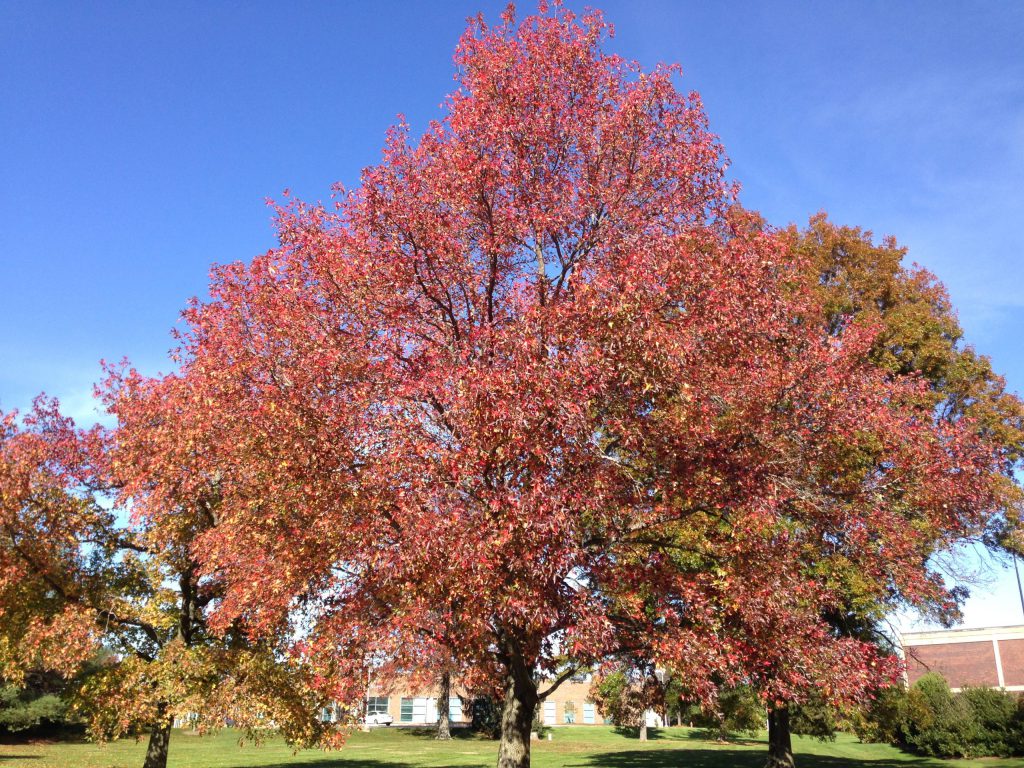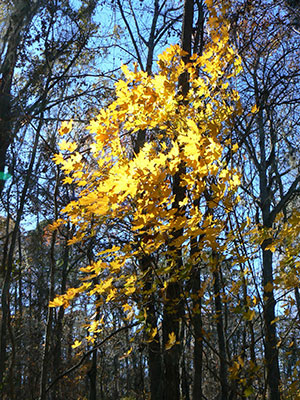Perpetual Question
Do any of the leaves change color down here in the fall? The most common answer is that there is none here in the land of evergreens. The prevalence of oaks (Quercus spp.) and pines (Pinus spp.) see to that. There is hope. Deciduous trees put on a show as the need for photosynthesis reduces. Chlorophyll production stops replaced with anthocyanins and carotenoids. As they take over, the beautiful display we all love begins. Several tree species thrive in the panhandle and have great autumn foliage. Once you know which, you’ll see a color pallet that would make DaVinci himself drool.
Tree for all seasons
Sweet gum (Liquidambar styraciflua) is a larger tree growing upwards of 75 feet tall with a 50 foot spread. The canopy has an early conical shape which evolves into an oval as the tree ages. This tree is excellent for local parks and to provide shade in your front yard. Red tinged flowers produced in spring combined with multi-shaded leaves provide interest throughout the year. However, autumn this tree comes into its own. As the days shorten and cool these leaves begin their journey to the ground by taking on shades of yellow, orange, red, or burgundy.

Panhandle Delight
A unique tree growing primarily in the Panhandle, the Florida maple (Acer floridanum) puts on an excellent autumn show. At that time of year, the leaves will change to a muted yellow or orange color. Reaching 60 feet high and 30 wide this oval canopied tree is ideal for shade or along streets. Fall is the only time you will see color changes from this tree, but in summer you’ll be treated to that classic maple leaf shape.

An Oddity of a Tree
The bald cypress (Taxodium distichum) is a tree rife with oddity. Growing at times as high as 80 feet with a roughly 35 foot spread these trees excel in your lawn. Be wary as when grown in wet environments they develop “knees” thought to help aerate roots in standing water. Ball shaped cones are the primary reproductive organs of this tree. For the purposes of this article, we’ll focus on the color changing needles. When winter is nigh, they change from pale green to an eye catching yellow or rusty copper. One of the few deciduous conifers, the needles will fall off revealing peeled bark for winter interest.

To Sum it Up
These are but a few of the trees in north Florida known to change color in the autumn. The list is not overly exhaustive, but there are several in this category. For more information on landscape trees, see this Ask IFAS document, or contact your local extension agent for additional information on this and any topic regarding your gardens and more.
- Consider Chestnuts for Your Landscape - December 26, 2025
- Cold Protection for North Florida - November 6, 2025
- Planning and Planting for Wildlife - October 10, 2025
